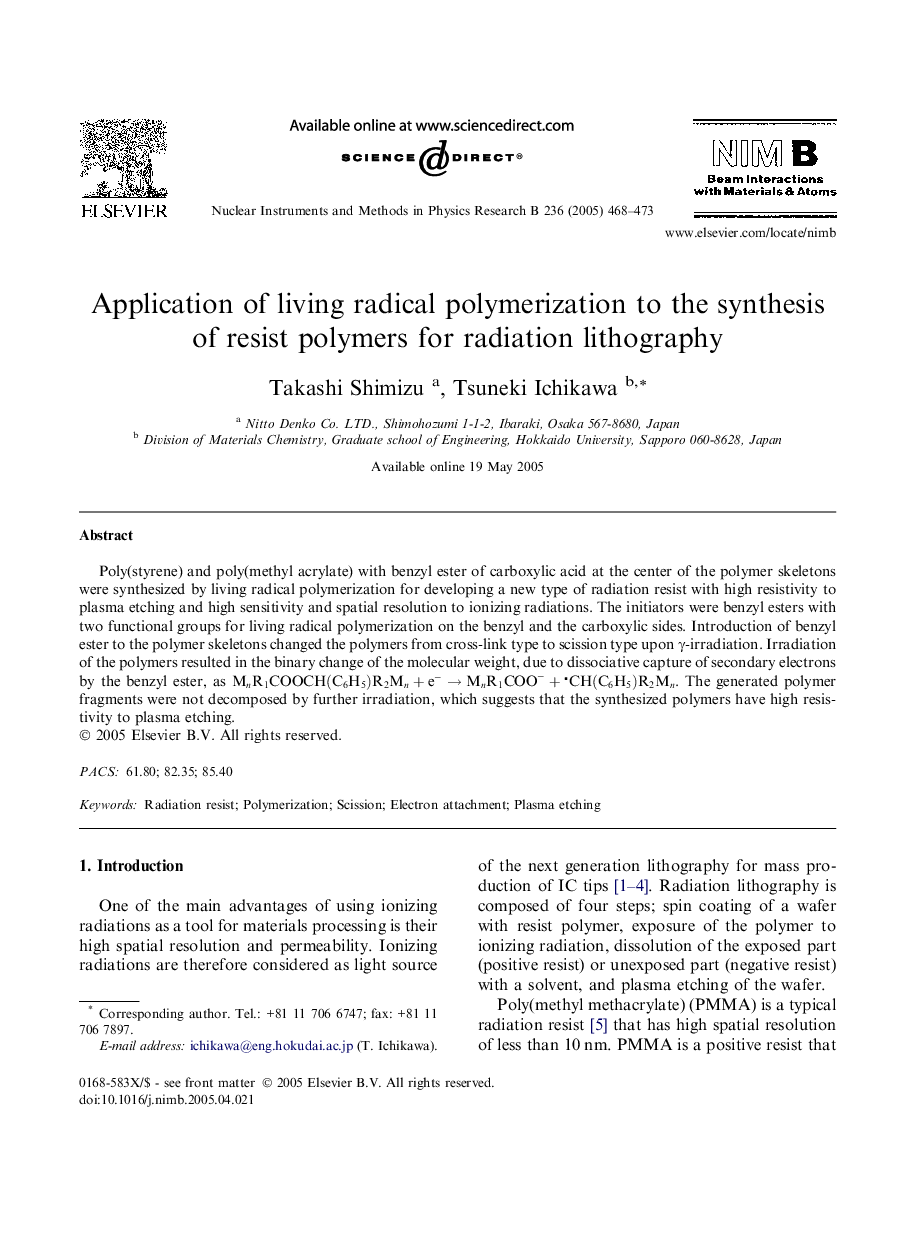| Article ID | Journal | Published Year | Pages | File Type |
|---|---|---|---|---|
| 9817876 | Nuclear Instruments and Methods in Physics Research Section B: Beam Interactions with Materials and Atoms | 2005 | 6 Pages |
Abstract
Poly(styrene) and poly(methyl acrylate) with benzyl ester of carboxylic acid at the center of the polymer skeletons were synthesized by living radical polymerization for developing a new type of radiation resist with high resistivity to plasma etching and high sensitivity and spatial resolution to ionizing radiations. The initiators were benzyl esters with two functional groups for living radical polymerization on the benzyl and the carboxylic sides. Introduction of benzyl ester to the polymer skeletons changed the polymers from cross-link type to scission type upon γ-irradiation. Irradiation of the polymers resulted in the binary change of the molecular weight, due to dissociative capture of secondary electrons by the benzyl ester, as MnR1COOCH(C6H5)R2Mn+e-âMnR1COO-+CH(C6H5)R2Mn. The generated polymer fragments were not decomposed by further irradiation, which suggests that the synthesized polymers have high resistivity to plasma etching.
Related Topics
Physical Sciences and Engineering
Materials Science
Surfaces, Coatings and Films
Authors
Takashi Shimizu, Tsuneki Ichikawa,
